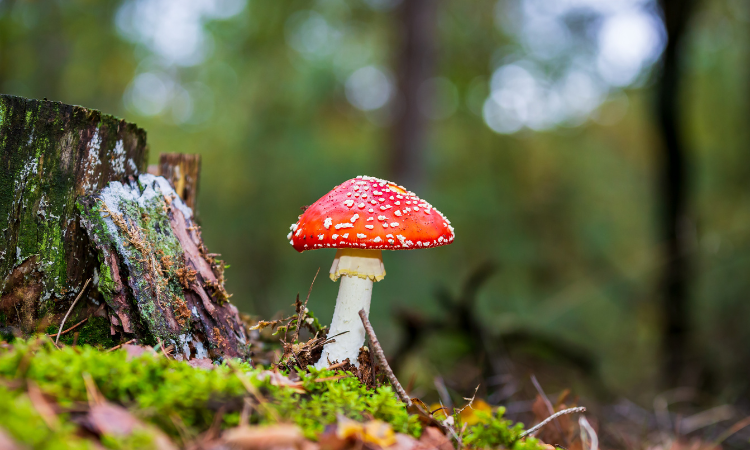Muscimol is a psychoactive compound found in certain mushrooms, most notably in the Amanita muscaria species. Known for its hallucinogenic properties, muscimol has been a subject of interest and cultural significance for centuries.
Amanita muscaria, commonly known as the fly agaric mushroom, is recognized by its distinctive red cap adorned with white specks. Muscimol is primarily concentrated in these mushrooms, and its psychoactive effects are often associated with traditional shamanic practices in various cultures.
Upon ingestion, muscimol interacts with the central nervous system, leading to altered perception and hallucinations. The effects are distinct from those induced by other hallucinogens, often described as dream-like or dissociative. Users may experience vivid visuals, changes in perception of time, and a sense of floating or detachment from reality.
While muscimol has been used ceremonially in some cultures for its perceived spiritual or divinatory qualities, its psychoactivity is not universally well-received. The compound can induce nausea, dizziness, and confusion, and its consumption comes with risks. Proper identification of the mushrooms containing muscimol is crucial, as ingesting other, toxic mushrooms can lead to severe poisoning.
The potential positive effects of muscimol have intrigued researchers, opening avenues for exploring its therapeutic applications. Some studies suggest that muscimol, found in Amanita muscaria mushrooms, may have anxiolytic properties, indicating its ability to reduce anxiety. Additionally, its impact on neurotransmitter systems raises questions about its potential role in managing certain neurological disorders. While these initial findings are promising, it’s crucial to approach the subject with caution, as the hallucinogenic nature of muscimol poses challenges in determining safe and effective dosages. Further research is needed to fully understand and harness the therapeutic benefits of muscimol.
In conclusion, muscimol stands at the intersection of cultural traditions, psychopharmacology, and potential therapeutic applications. Its psychoactive properties have made it a subject of fascination and caution, emphasizing the importance of responsible use and continued research to unlock its full potential while addressing associated risks.

